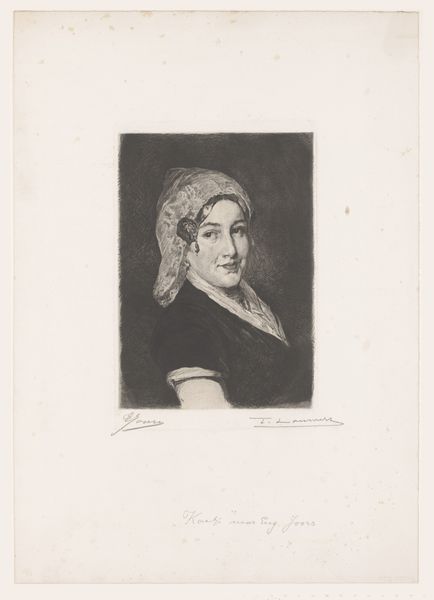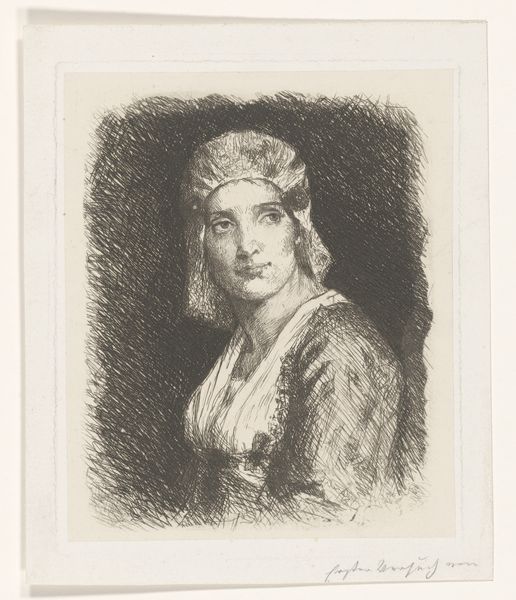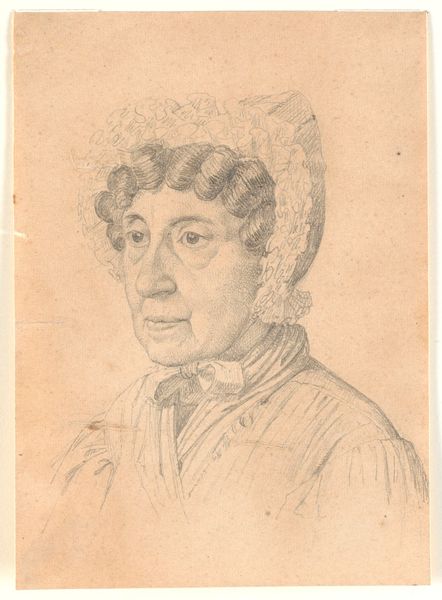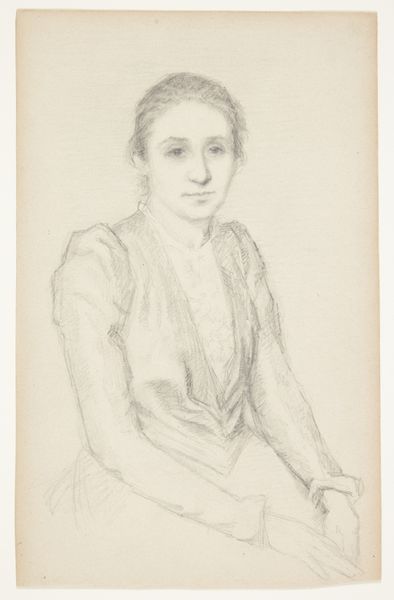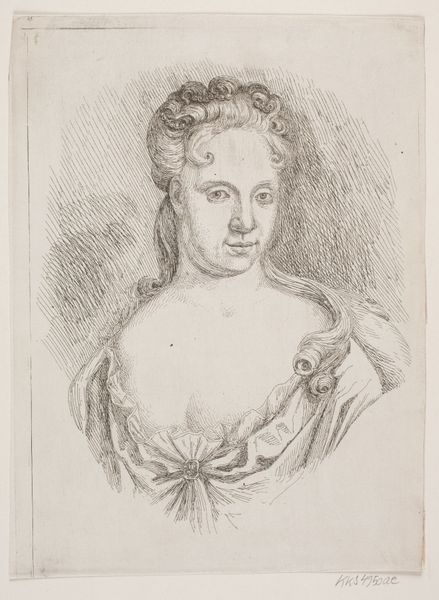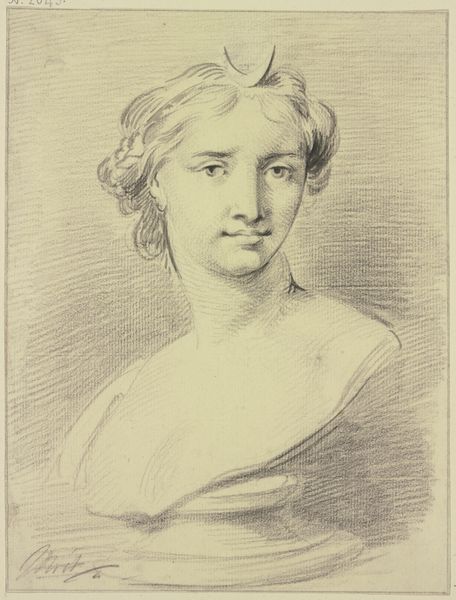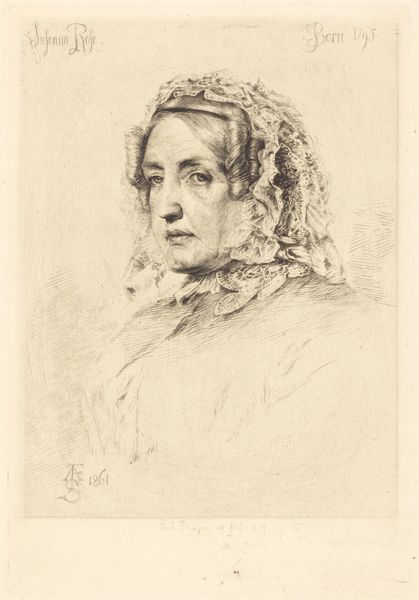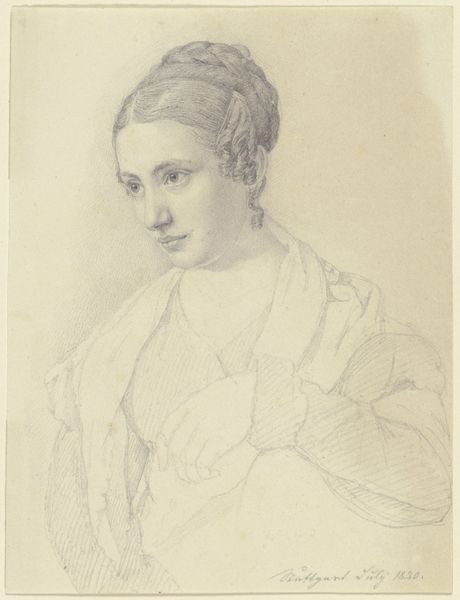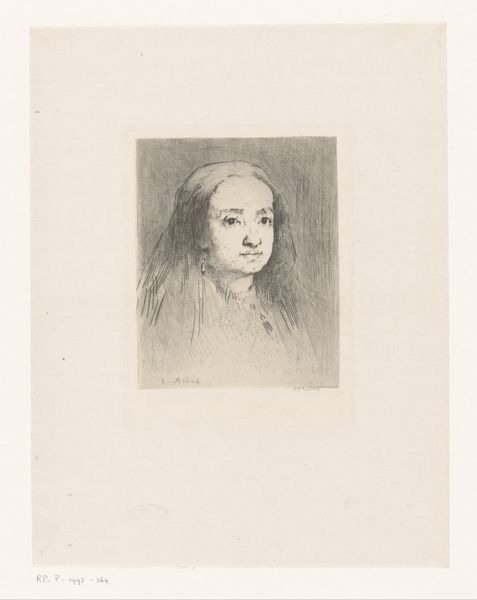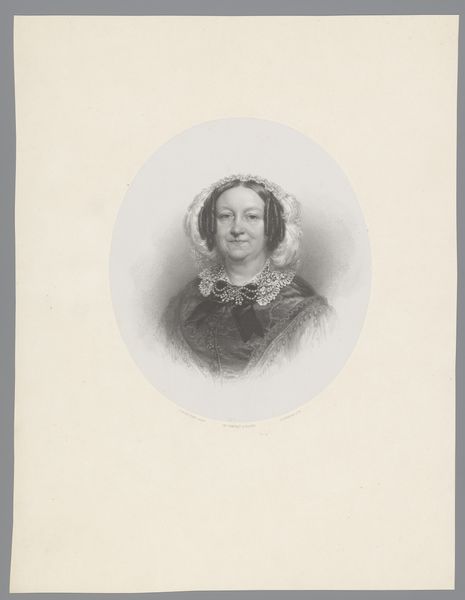
print, etching
#
portrait
# print
#
etching
#
old engraving style
#
etching
#
line
#
realism
Dimensions: height 237 mm, width 159 mm
Copyright: Rijks Museum: Open Domain
Curator: This is an etching by Frans Lauwers titled "Portret van een onbekende vrouw," or "Portrait of an Unknown Woman" which historians have dated sometime between 1864 and 1911. The artwork is a print rendered with incredible line detail. What are your first thoughts, Editor? Editor: The woman's eyes! They hold this quiet strength. There's a slight upturn to her lips too; a Mona Lisa effect almost. The whole piece feels intimate despite being rendered in monochrome. Curator: That sense of intimacy is quite interesting. During the period Lauwers created this portrait, the construction of "femininity" was itself being widely re-imagined. It’s fascinating to ponder who this unknown woman may have been. Was she from the rising bourgeois class, or from more humble origins? The lace headdress suggests a degree of social status. Editor: It definitely speaks to that "in-between" moment when traditional roles are blurring. And the sketch-like quality emphasizes the feeling, it isn’t quite finished. Is this "woman" searching her place in the society or art ? Curator: Indeed, it evokes the transitional, as does the use of etching in itself. Photography was on the rise then, but printmaking held its own as a democratic medium accessible to wider audiences and social groups than painting at that moment of history. There's a dialogue happening about representation here. Editor: I see your point. The cross-hatching gives her face a tangible, almost sculptural quality, but I also find myself wondering about Lauwers himself. Did he feel connected to her? The act of creating this portrait—did it empower her or perhaps reinforce certain social boundaries? Curator: It’s that constant negotiation, isn’t it? Portraiture can be seen as an assertion of power, as well as an affirmation of an individual’s worth, whether that be in relation to class or the societal recognition for her role in social mobility. It all gets tied up in the politics of representation and identity. Editor: It makes you appreciate art's enduring power. To spark these conversations, so many years later, with just lines etched onto paper. The possibilities for interpretation just make it feel like her story can carry on forever, you know. Curator: Yes, and I think that perhaps, in leaving her identity open, Lauwers' work transcends specificity and enters the realm of shared human experience, or universal stories about being, which may also lead us all to think about how stories of anonymous women like this "Portret van een onbekende vrouw" are told in history books.
Comments
No comments
Be the first to comment and join the conversation on the ultimate creative platform.
